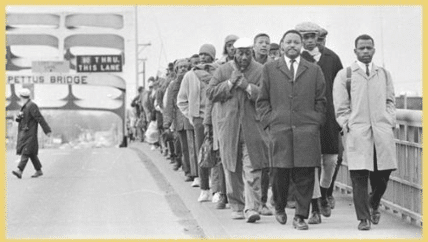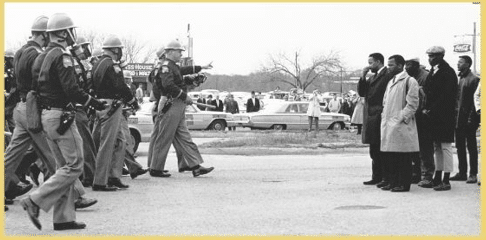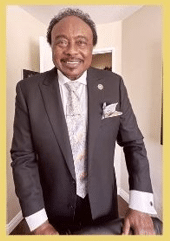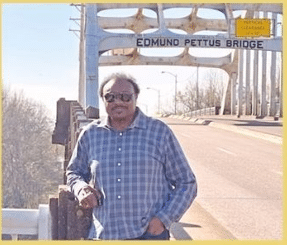Bloody Sunday March 7, 1965
Thousands of Black people had protested, and many had died as they engaged in non-violent campaigns to win the right to vote. On “Bloody Sunday”, March 7, 1965, America and the world witnessed a horrible sight. On that day TV cameras showed protestors being brutally attacked and beaten by the Alabama State Police as they marched peacefully from Selma to Montgomery across the Edmund Pettus Bridge.


John Lewis and Hosea Williams led the march. Without Bloody Sunday, it’s unclear if President Lyndon B. Johnson would have signed the Voting Rights Act of 1965
AALO President, Bob Winn was on Pettus Bridge March 7, 1965

As a young man, Robert Winn was fascinated when he first heard the Rev. Martin
Luther King Jr. give his “I Have a Dream” speech on television more than 50 years ago. Bob said, “That speech was so moving. I just listened and listened and listened.” It was the late civil rights icon who taught Bob that he was responsible for his community. Bob’s music teacher from his Alabama high school encouraged him to take part in the Selma to Montgomery March.
Bob Winn was one of more than 500 peaceful demonstrators who marched from a Selma church to Edmund Pettus Bridge on March 7, 1965. They were met by state troopers on horseback armed with billy clubs and tear gas. Bob remembers that “We were really going to turn around. Before we could start, they started beating us with batons.” Bob used his body to shield the older demonstrators. By the time the protesters had completely turned around and the beatings finally stopped, he was struck several times and bears a scar above his left eye from a wound he sustained. Cameras captured the shocking images of “Bloody Sunday,” a turning point in the civil rights struggle.

AALO
Malling Address: PO Box 950057. Mission Hills, CA 91395 Email: info@sfvaalo.org Website: www.sfvaalo.org Phone: (818) 561-5646
